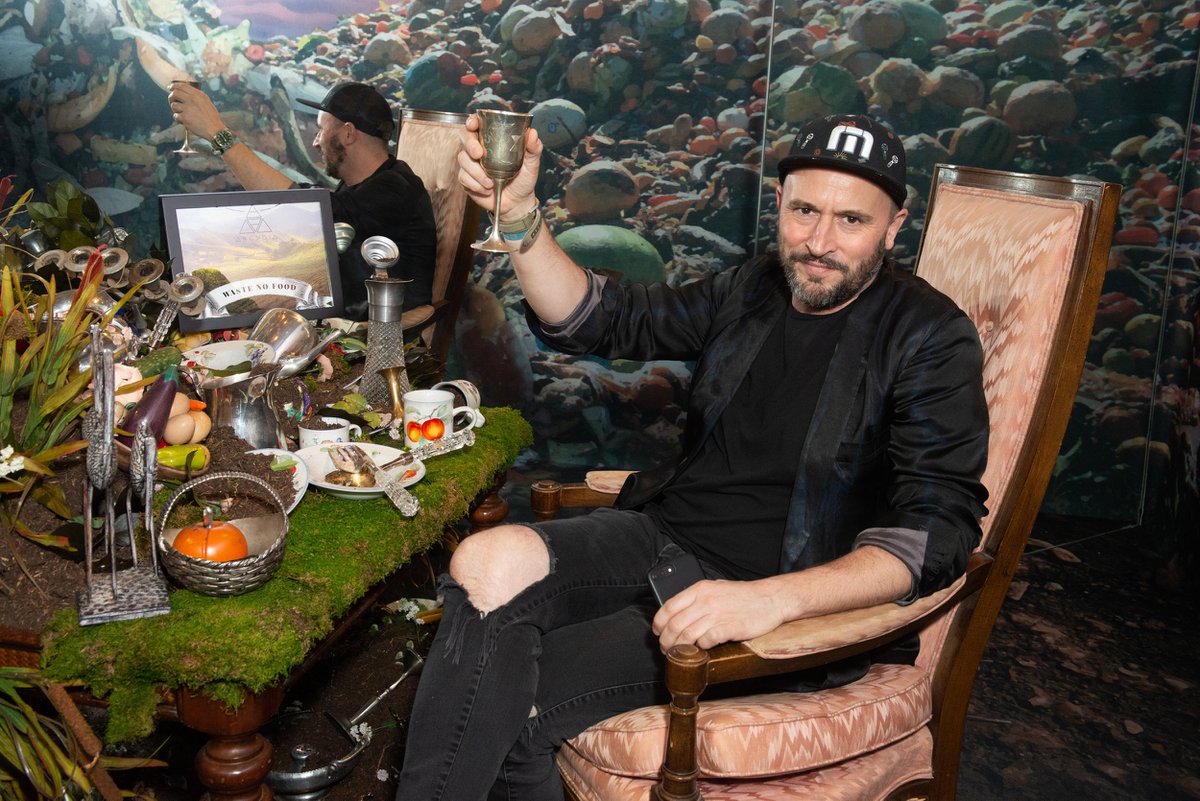Before turning his attention to environmental storytelling, Valentino Vettori spent 25 years designing immersive, large-scale installations for the fashion industry. His work brought consumers into branded spaces and experiences — but over time, he grew disillusioned with the impact of the industry and his role in it. That discomfort eventually led to a clean break from fashion and a new creative mission: to use art and technology to spark hope, awareness, and change.
In 2017, Vettori attended the Summit at Sea conference, where he encountered environmentalist Paul Hawken’s work on reversing climate change. The presentation — and the lack of people in the room — underscored a growing cultural disconnect between climate urgency and public attention. Vettori walked away from that moment with a clear direction: to create something immersive, emotionally resonant, and solution-focused.
What followed was Arcadia Earth, a traveling experiential art exhibition that uses mixed media, technology, and science to explore the planet’s most pressing environmental challenges. The project’s latest iteration — “A Vision for Tomorrow” — is a 45-minute immersive 360° dome film set to debut at Fort Worth’s Jane & John Justin Foundation Omni Theater on July 27. Customized for the Omni’s massive LED dome, the film blends visual spectacle and scientific storytelling across three environmental chapters: Trees, Air, and Water.
Fort Worth Magazine had a chance to speak with Vettori before he boarded a flight to Cowtown for the very first time.
Fort Worth Magazine: What inspired you to become an experiential artist working at the intersection of art, science, and sustainability?
Valentino Vettori: I was in fashion for 25 years of my life. At the time, all the retail industry was collapsing — malls were closing. I went to Summit at Sea in 2017, and my team was running our installation, so I got to go around the conference. That’s when I saw Paul Hawken present. He had just published “Drawdown,” and the room was empty. I thought it was fascinating — we focus so much on people like Elon Musk and Jeff Bezos going to Mars, but no one was paying attention to what’s happening here on Earth.
FWM: What did you take away from Hawken’s presentation?
VV: There were two major things. First, people don’t get told the story of climate change with a happy ending — it’s always doom and gloom. And second, people don’t know what to do because it’s all told through scientific data. So for me, it was like: let’s tell a story not about fear, but about solutions and hope. That day, I decided I didn’t want to be in fashion anymore. If I was going to be a storyteller, I wanted to address those two problems. Arcadia became a tool to inform, inspire, and activate.
FWM: How did the idea evolve into the immersive dome experience being shown in Fort Worth?
VV: We started Arcadia Earth as a large exhibit — New York was 20,000 square feet, Toronto is 23,000. But I realized I could use our technology to create visuals that fit in beautiful venues like planetariums. A year and a half ago, we tested it. I believe these venues are designed to create memories, and I wanted to bring a message that could live in them — one that didn’t need travel or a big footprint.
FWM: Was the transition to dome format challenging?
VV: Oh, yes. The first time I tested it at the Liberty Science Center — which has the biggest planetarium in North America — it was horrible. The perspective, the focal point, everything was wrong. We had to redesign everything. What looks good on a flat screen doesn’t translate to a dome. And then we had to render in 8K, which pushed us back months. But in the end, the idea was to create something responsibly — without the carbon footprint of traditional film shoots.
FWM: What’s the storyline behind ‘A Vision for Tomorrow?’
VV: It’s the journey of a lonely astronaut — someone disconnected, asking questions, unsure what to believe. He’s guided by AI and travels through three environmental chapters: Trees, Air, and Water. He learns that small things matter. It’s about shifting our mindset from overwhelming to one of awareness.
FWM: How do you hope audiences respond?
VV: I gave up on expectations. I just want to say, ‘Hey, look at this,’ and then let people take their own journey. So far, we’ve received incredible thank-you notes from people who watched it. But I believe everyone processes it differently — and that’s a good thing.
FWM: How did American Forests get involved?
VV: We needed a partner to fact-check everything. I’m not a scientist, and I wanted to make sure what we were presenting was true. They confirmed the facts and offered an actionable path for viewers. After the film, we have a QR code where people can connect directly with them or other nonprofits. That was important — not just to inform, but to give people something they could do.
FWM: You’ve shown this in some major cities. What’s it like bringing it to Fort Worth?
VV: This is my first time here. I’m learning about new parts of America through the film — Portland, Fort Worth, places I hadn’t been before. I’m excited to experience the culture and see how the audience responds.
FWM: What role does sound and scale play in provoking emotion?
VV: Memories get created through experience. With this, you have immersive visuals and 360-degree sound — it’s like a rollercoaster for the senses. Even for me, as an artist, it felt new. And if it’s new to me, I can only imagine how audiences will respond.
